Mahdi Mostajabdaveh
SMARTAPS: Tool-augmented LLMs for Operations Management
Jul 23, 2025Abstract:Large language models (LLMs) present intriguing opportunities to enhance user interaction with traditional algorithms and tools in real-world applications. An advanced planning system (APS) is a sophisticated software that leverages optimization to help operations planners create, interpret, and modify an operational plan. While highly beneficial, many customers are priced out of using an APS due to the ongoing costs of consultants responsible for customization and maintenance. To address the need for a more accessible APS expressed by supply chain planners, we present SmartAPS, a conversational system built on a tool-augmented LLM. Our system provides operations planners with an intuitive natural language chat interface, allowing them to query information, perform counterfactual reasoning, receive recommendations, and execute scenario analysis to better manage their operation. A short video demonstrating the system has been released: https://youtu.be/KtIrJjlDbyw
Evaluating LLM Reasoning in the Operations Research Domain with ORQA
Dec 22, 2024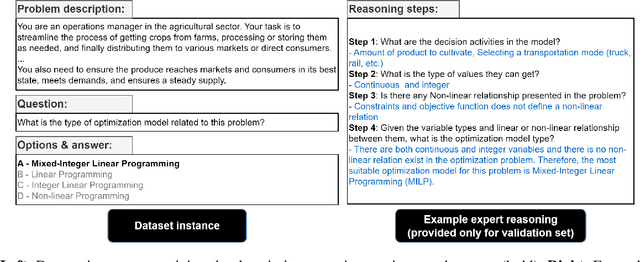


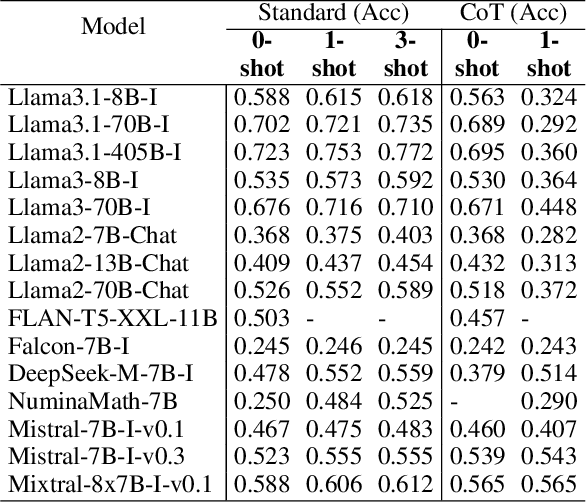
Abstract:In this paper, we introduce and apply Operations Research Question Answering (ORQA), a new benchmark designed to assess the generalization capabilities of Large Language Models (LLMs) in the specialized technical domain of Operations Research (OR). This benchmark evaluates whether LLMs can emulate the knowledge and reasoning skills of OR experts when confronted with diverse and complex optimization problems. The dataset, developed by OR experts, features real-world optimization problems that demand multistep reasoning to construct their mathematical models. Our evaluations of various open source LLMs, such as LLaMA 3.1, DeepSeek, and Mixtral, reveal their modest performance, highlighting a gap in their ability to generalize to specialized technical domains. This work contributes to the ongoing discourse on LLMs generalization capabilities, offering valuable insights for future research in this area. The dataset and evaluation code are publicly available.
Analyzing Modularity Maximization in Approximation, Heuristic, and Graph Neural Network Algorithms for Community Detection
Oct 17, 2023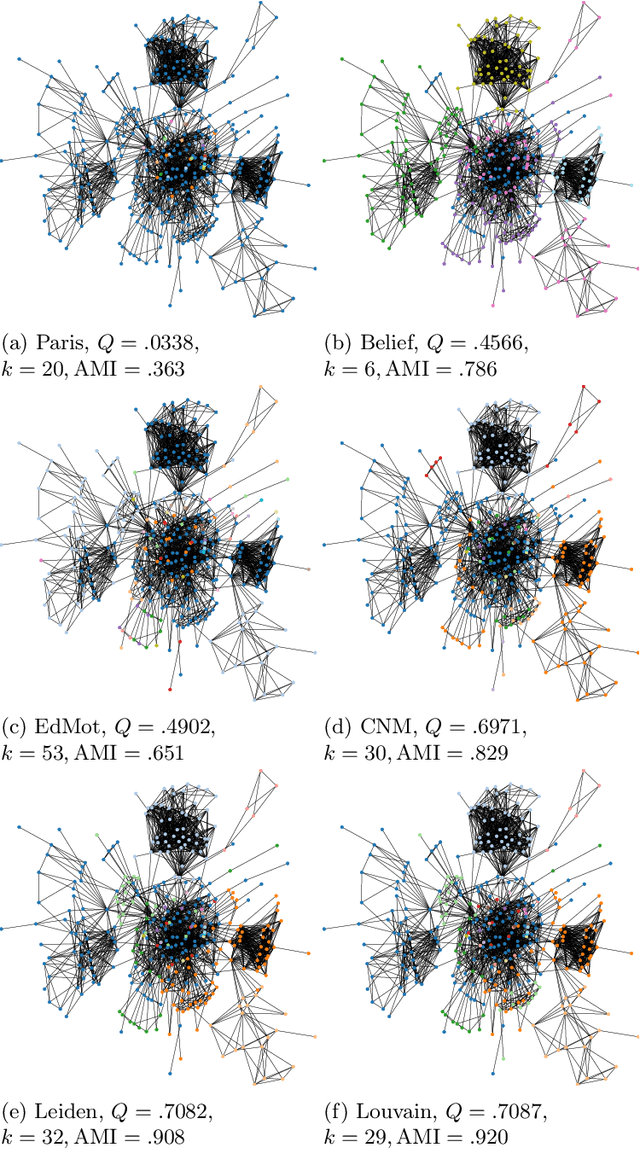
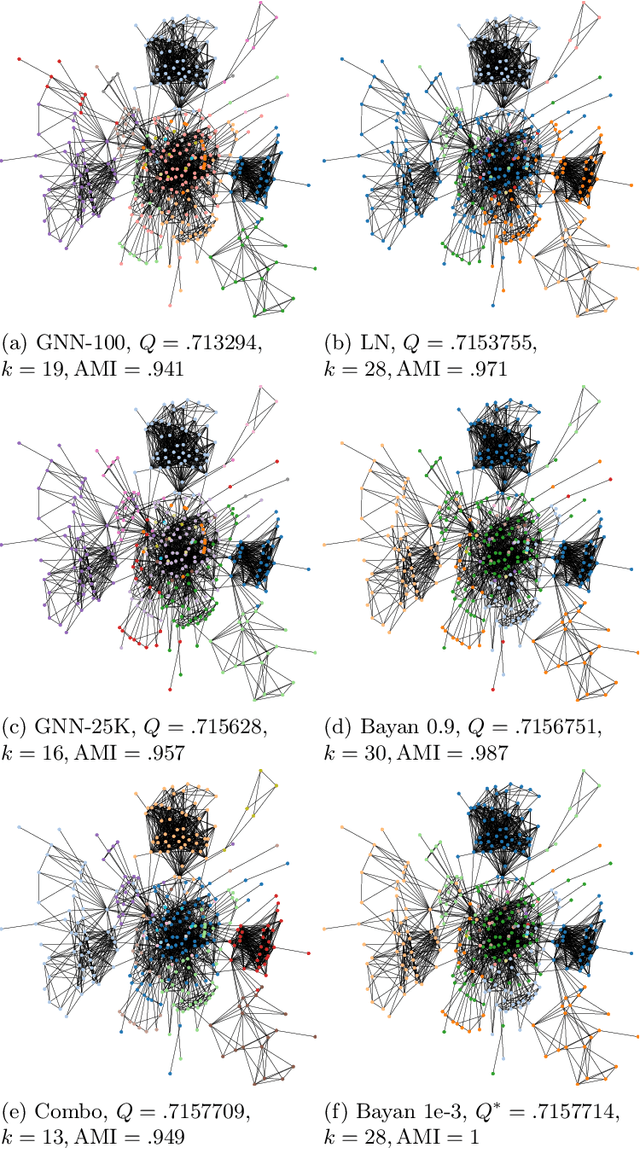
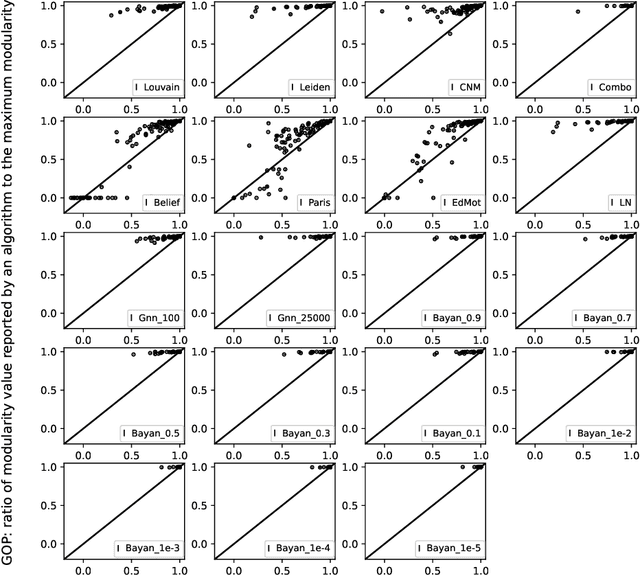
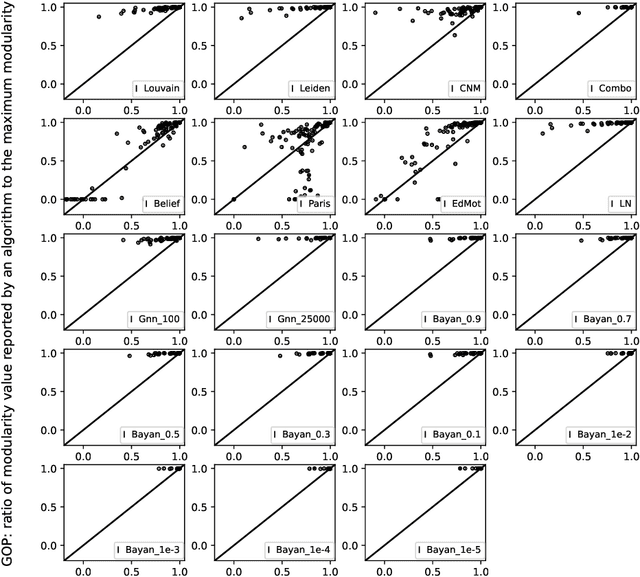
Abstract:Community detection, a fundamental problem in computational sciences, finds applications in various domains. Heuristics are often employed to detect communities through maximizing an objective function, modularity, over partitions of network nodes. Our research delves into the performance of different modularity maximization algorithms in achieving optimal partitions. We use 104 networks, comprising real-world instances from diverse contexts and synthetic graphs with modular structures. We analyze ten inexact modularity-based algorithms against an exact baseline which is an exact integer programming method that globally optimizes modularity. The ten algorithms analyzed include eight heuristics, two variations of a graph neural network algorithm, and several variations of the Bayan approximation algorithm. Our analysis uncovers substantial dissimilarities between the partitions obtained by most commonly used modularity-based methods and any optimal partition of the networks, as indicated by both adjusted and reduced mutual information metrics. Importantly, our results show that near-optimal partitions are often disproportionately dissimilar to any optimal partition. Taken together, our analysis points to a crucial limitation of the commonly used unguaranteed modularity-based methods for discovering communities: they rarely produce an optimal partition or a partition resembling an optimal partition even on networks with modular structures. If modularity is to be used for detecting communities, approximate optimization algorithms are recommendable for a more methodologically sound usage of modularity within its applicability limits.
NL4Opt Competition: Formulating Optimization Problems Based on Their Natural Language Descriptions
Mar 27, 2023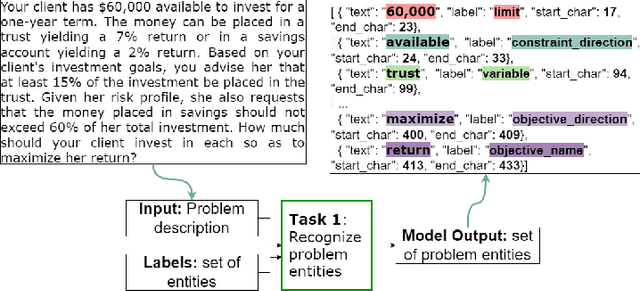
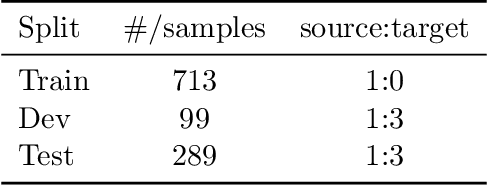
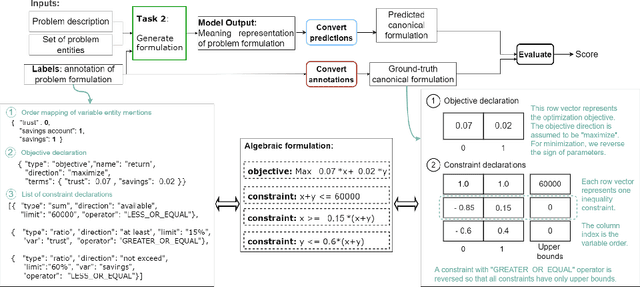

Abstract:The Natural Language for Optimization (NL4Opt) Competition was created to investigate methods of extracting the meaning and formulation of an optimization problem based on its text description. Specifically, the goal of the competition is to increase the accessibility and usability of optimization solvers by allowing non-experts to interface with them using natural language. We separate this challenging goal into two sub-tasks: (1) recognize and label the semantic entities that correspond to the components of the optimization problem; (2) generate a meaning representation (i.e., a logical form) of the problem from its detected problem entities. The first task aims to reduce ambiguity by detecting and tagging the entities of the optimization problems. The second task creates an intermediate representation of the linear programming (LP) problem that is converted into a format that can be used by commercial solvers. In this report, we present the LP word problem dataset and shared tasks for the NeurIPS 2022 competition. Furthermore, we investigate and compare the performance of the ChatGPT large language model against the winning solutions. Through this competition, we hope to bring interest towards the development of novel machine learning applications and datasets for optimization modeling.
Heuristic Modularity Maximization Algorithms for Community Detection Rarely Return an Optimal Partition or Anything Similar
Feb 28, 2023Abstract:Community detection is a classic problem in network science with extensive applications in various fields. The most commonly used methods are the algorithms designed to maximize modularity over different partitions of the network nodes into communities. Using 80 real and random networks from a wide range of contexts, we investigate the extent to which current heuristic modularity maximization algorithms succeed in returning modularity-maximum (optimal) partitions. We evaluate (1) the ratio of their output modularity to the maximum modularity for each input graph and (2) the maximum similarity between their output partition and any optimal partition of that graph. Our computational experiments involve eight existing heuristic algorithms which we compare against an exact integer programming method that globally maximizes modularity. The average modularity-based heuristic algorithm returns optimal partitions for only 16.9% of the 80 graphs considered. Results on adjusted mutual information show considerable dissimilarity between the sub-optimal partitions and any optimal partitions of the graphs in our experiments. More importantly, our results show that near-optimal partitions tend to be disproportionally dissimilar to any optimal partition. Taken together, our analysis points to a crucial limitation of commonly used modularity-based algorithms for discovering communities: they rarely return an optimal partition or a partition resembling an optimal partition. Given this finding, developing an exact or approximate algorithm for modularity maximization is recommendable for a more methodologically sound usage of modularity in community detection.
The Bayan Algorithm: Detecting Communities in Networks Through Exact and Approximate Optimization of Modularity
Sep 10, 2022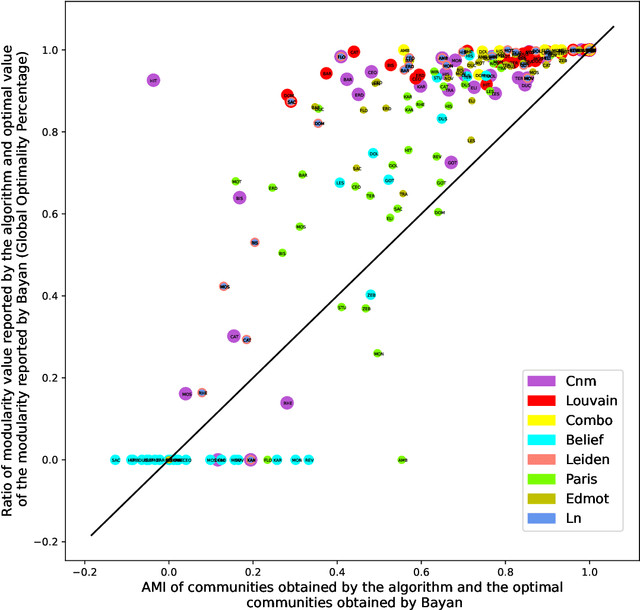
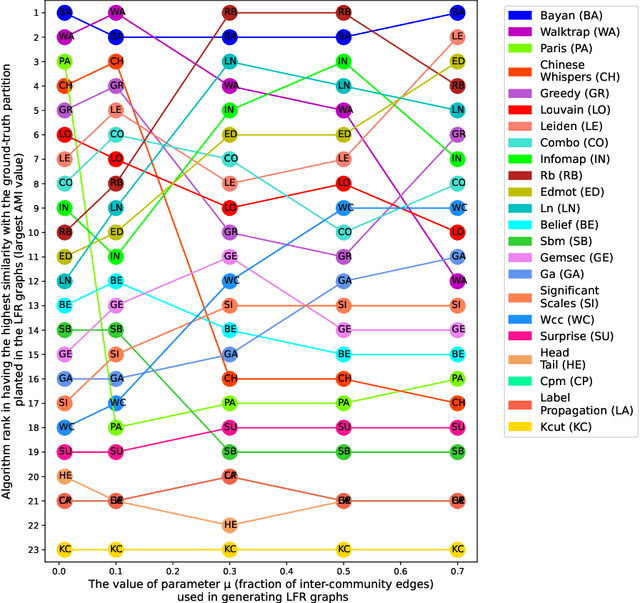
Abstract:Community detection is a classic problem in network science with extensive applications in various fields. The most commonly used methods are the algorithms designed to maximize a utility function, modularity, across different ways that a network can be partitioned into communities. Despite their name and design philosophy, current modularity maximization algorithms generally fail to maximize modularity or guarantee any proximity to an optimal solution. We propose the Bayan algorithm which, unlike the existing methods, returns network partitions with a guarantee of either optimality or proximity to an optimal solution. At the core of the Bayan algorithm is a branch-and-cut scheme that solves a sparse integer programming formulation of the modularity maximization problem to optimality or approximate it within a factor. We analyze the performance of Bayan against 22 existing algorithms using synthetic and real networks. Through extensive experiments, we demonstrate Bayan's distinctive capabilities not only in maximizing modularity, but more importantly in accurate retrieval of ground-truth communities. Bayan's comparative level of performance remains stable over variations in the amount of noise in the data (graph) generation process. The performance of Bayan as an exact modularity maximization algorithm also reveals the theoretical capability limits of maximum-modularity partitions in accurate retrieval of communities. Overall our analysis points to Bayan as a suitable choice for a methodologically grounded detection of communities through exact (approximate) maximization of modularity in networks with up to $\sim10^3$ edges (and larger networks). Prospective advances in graph optimization and integer programming can push these limits further.
 Add to Chrome
Add to Chrome Add to Firefox
Add to Firefox Add to Edge
Add to Edge